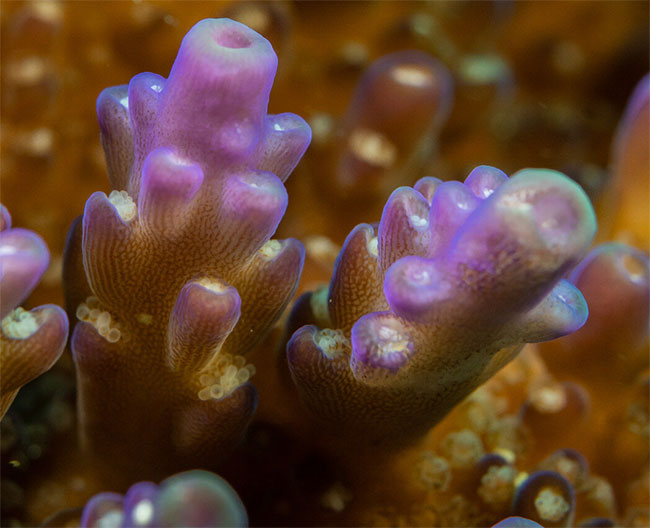Detection of organisms containing chlorophyll but not photosynthesis
In a study published in Nature in April 2019, scientists at the University of British Columbia (Canada) found the world's first creature produced chlorophyll but did not participate in photosynthesis. well suited.

Corallicolid lives parasites in corals.(Photo: UBC)
This strange animal lives parasitic in the stomach cavity of corals and is called corallicolid .
'Corallicolid lives with 70% of the corals present on Earth, and they have never been observed until now,' said Patrick Keeling, a member of the research team.
Chlorophyll - a green pigment found in plants and algae - is capable of absorbing sunlight energy to produce organic compounds during photosynthesis. If an organism absorbs only light with chlorophyll but does not photosynthesize to release energy, the creature will be in danger. Because chlorophyll was then like bombs in cells.
However, corallicolid is the exception. The team found corallicolid contained four genes coding for chlorophyll synthesis.
"We still don't know why corallicolid possesses these genes and they synthesize chlorophyll for what purpose ," Keeling said.
- What if our bodies can synthesize food like plants?
- This bacterium will be the world's new energy source
- Why are leaves green?
- Photosynthesis method helps agriculture develop
- New finding: 'Reverse photosynthesis' helps reduce pollution
- Develop simple, cheap materials for 'artificial photosynthesis'
- Discover ghosts, flowers of the underworld
- Sea slug: Calling is a child or a tree?
- Plant-derived technology will be the solution to a clean energy problem
- Photochemical photosynthesis like leaves
- Why do some plants have green leaves?
- Mysterious ghost tree does not need photosynthesis in the American forest
 Surprised: Fish that live in the dark ocean still see colors
Surprised: Fish that live in the dark ocean still see colors Japan suddenly caught the creature that caused the earthquake in the legend
Japan suddenly caught the creature that caused the earthquake in the legend A series of gray whale carcasses washed ashore on California's coast
A series of gray whale carcasses washed ashore on California's coast Compare the size of shark species in the world
Compare the size of shark species in the world